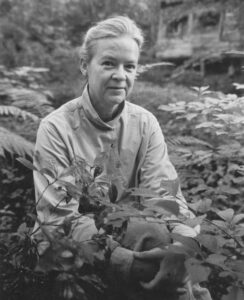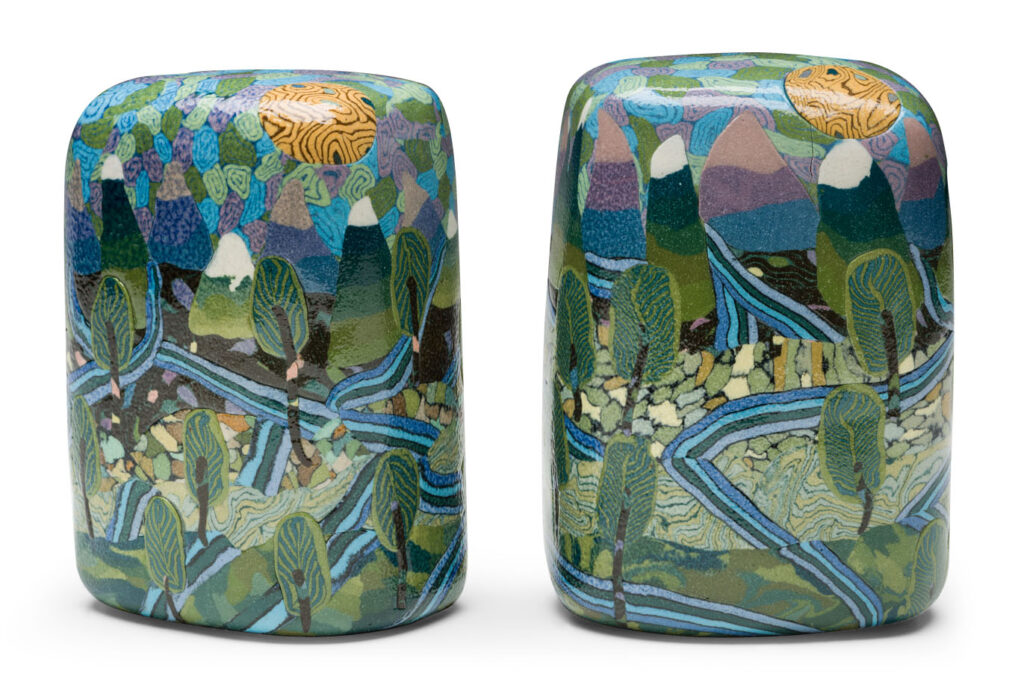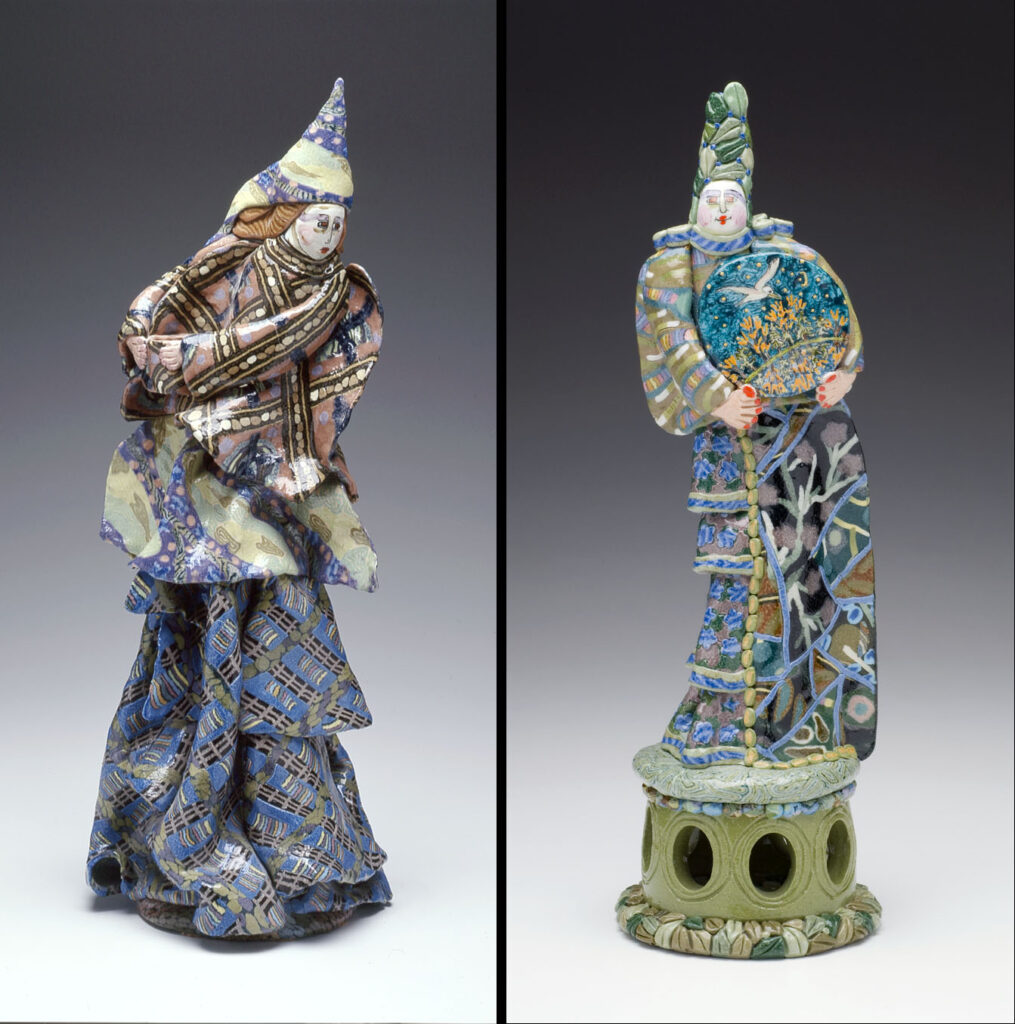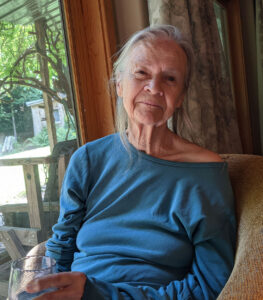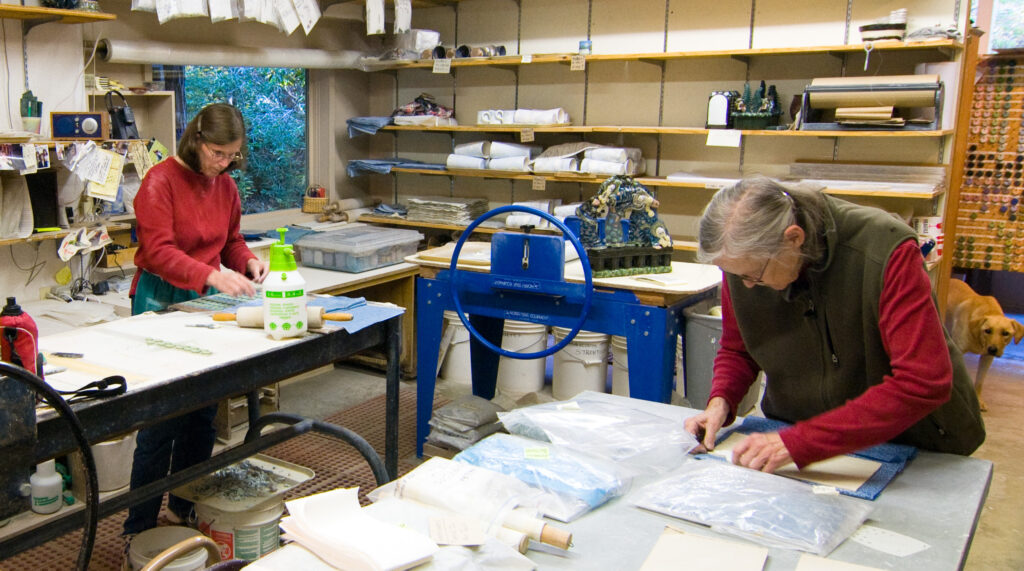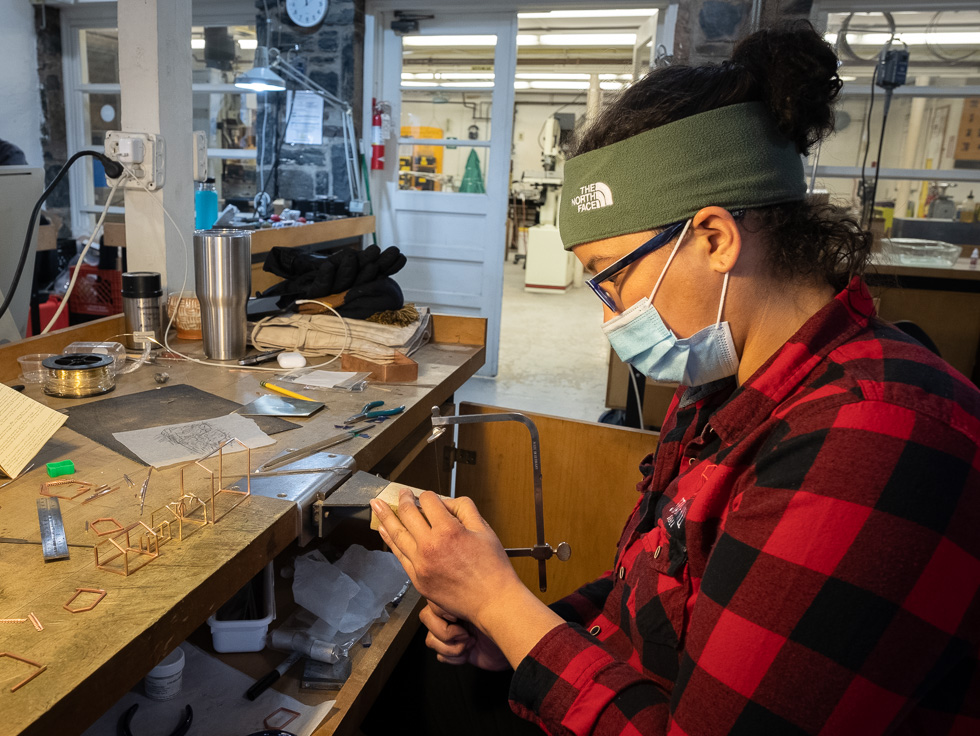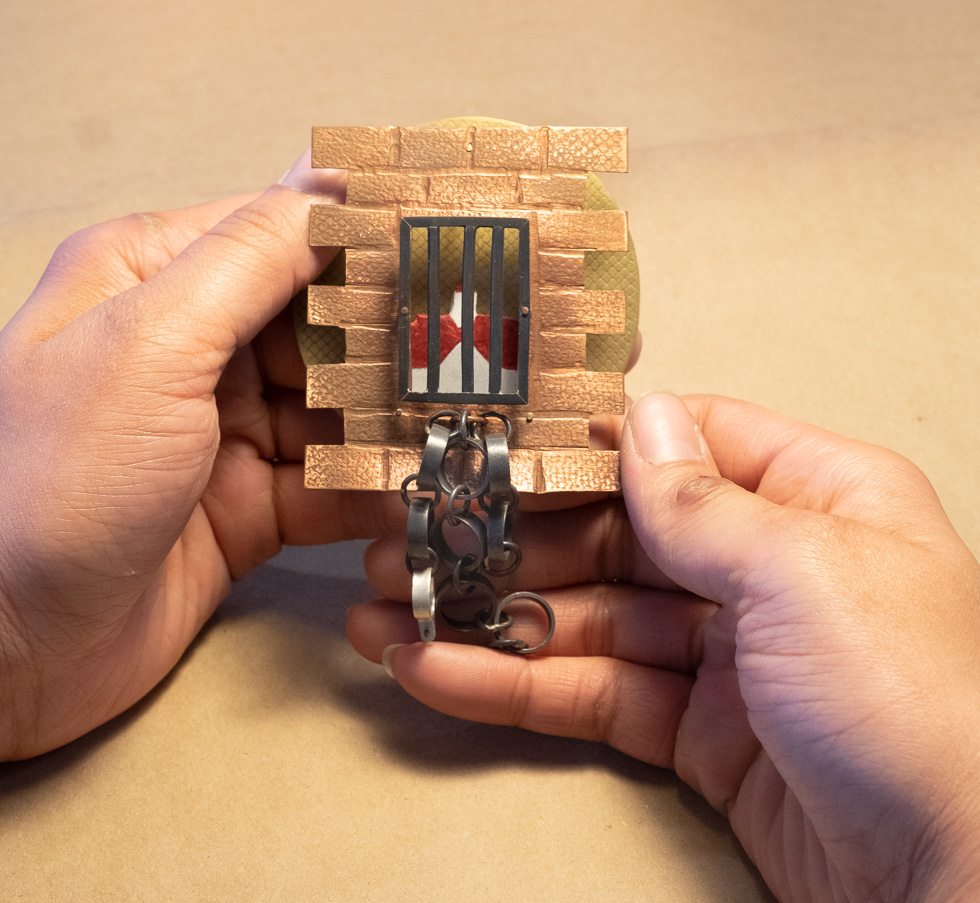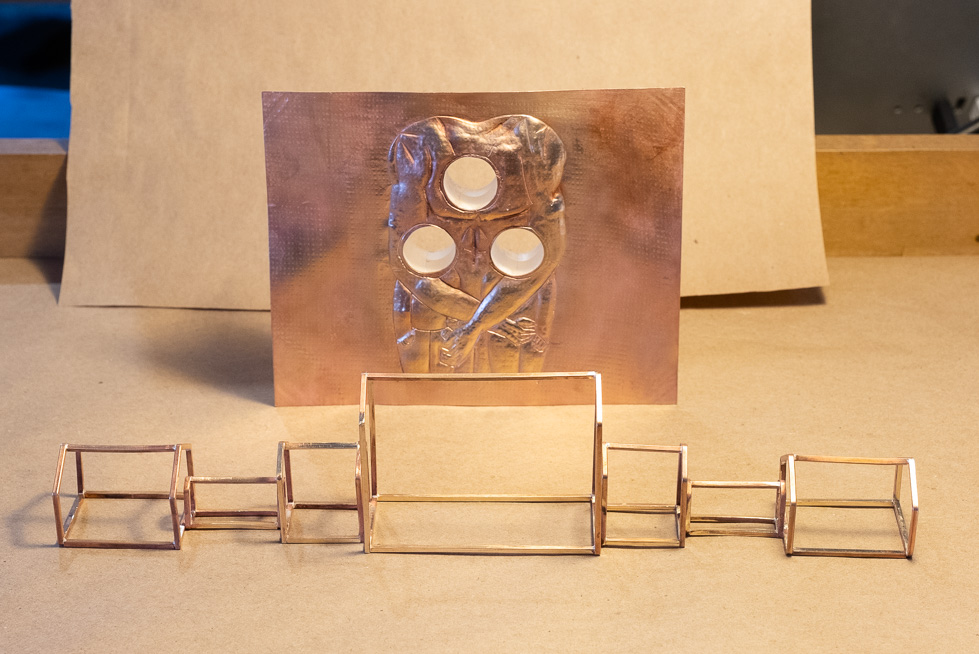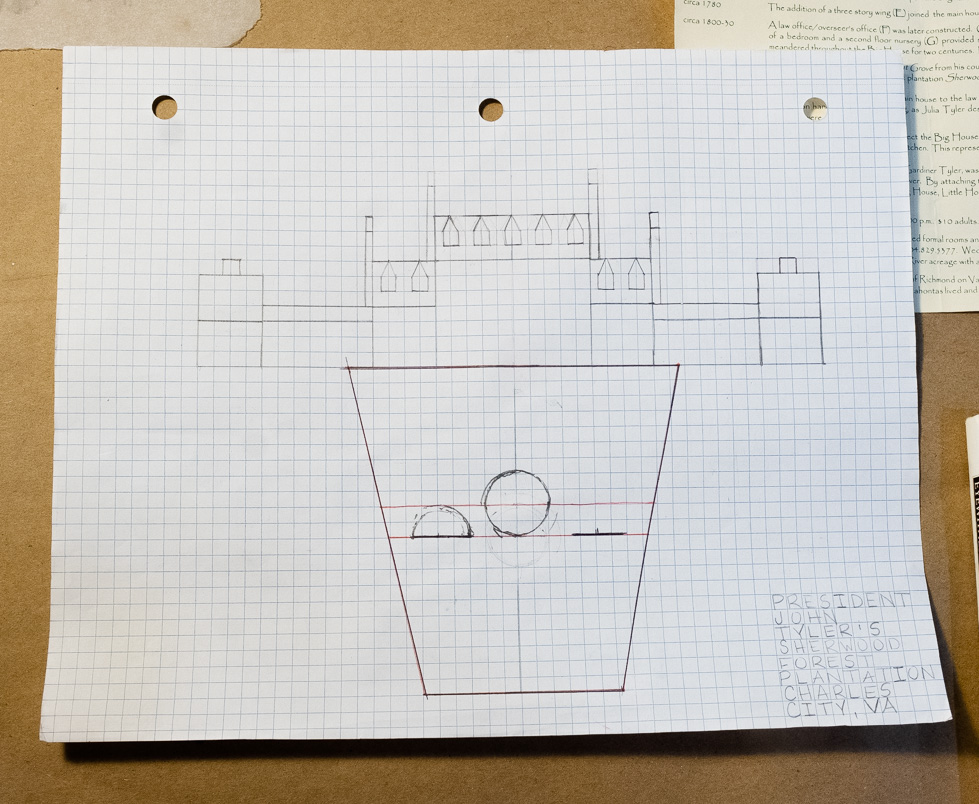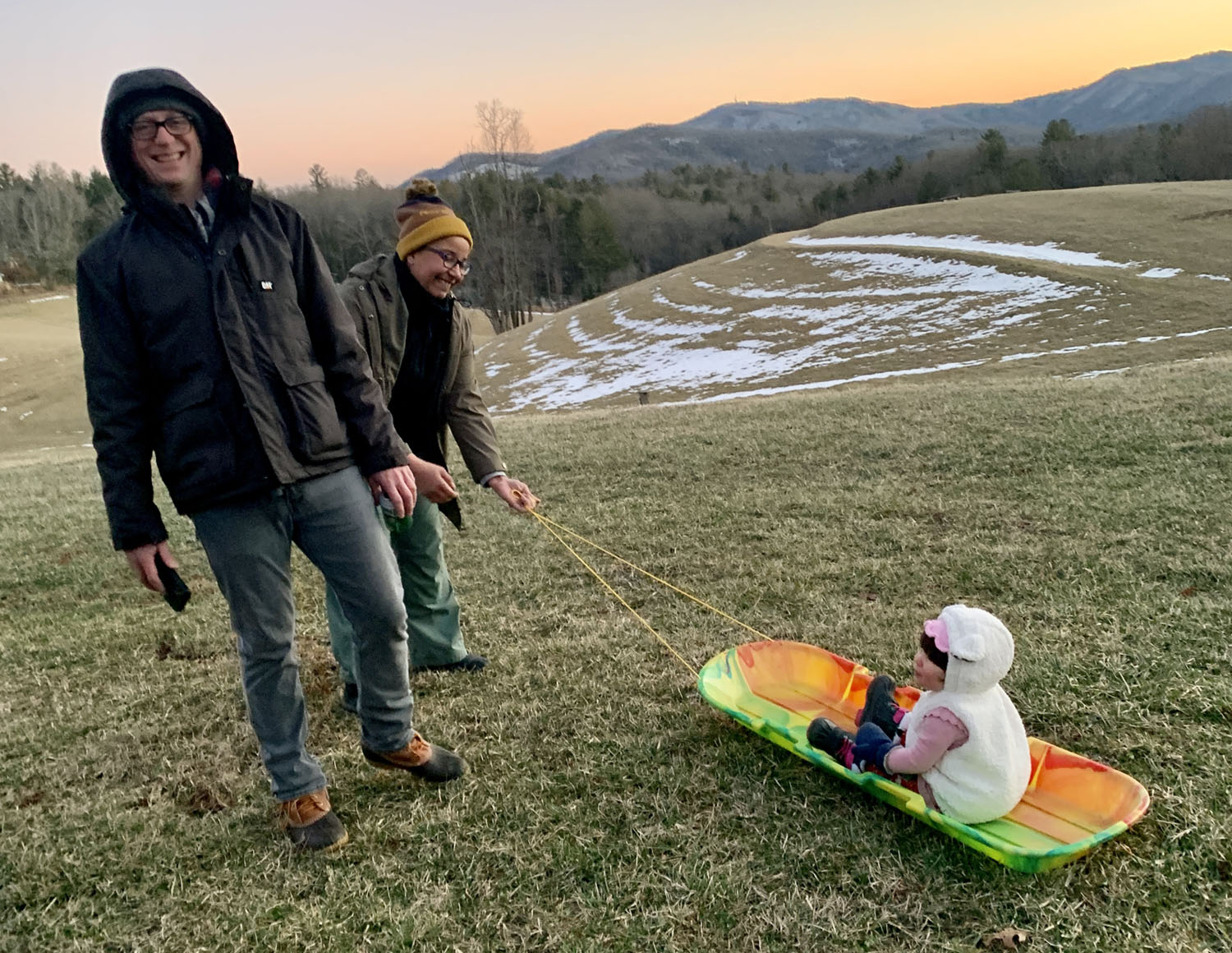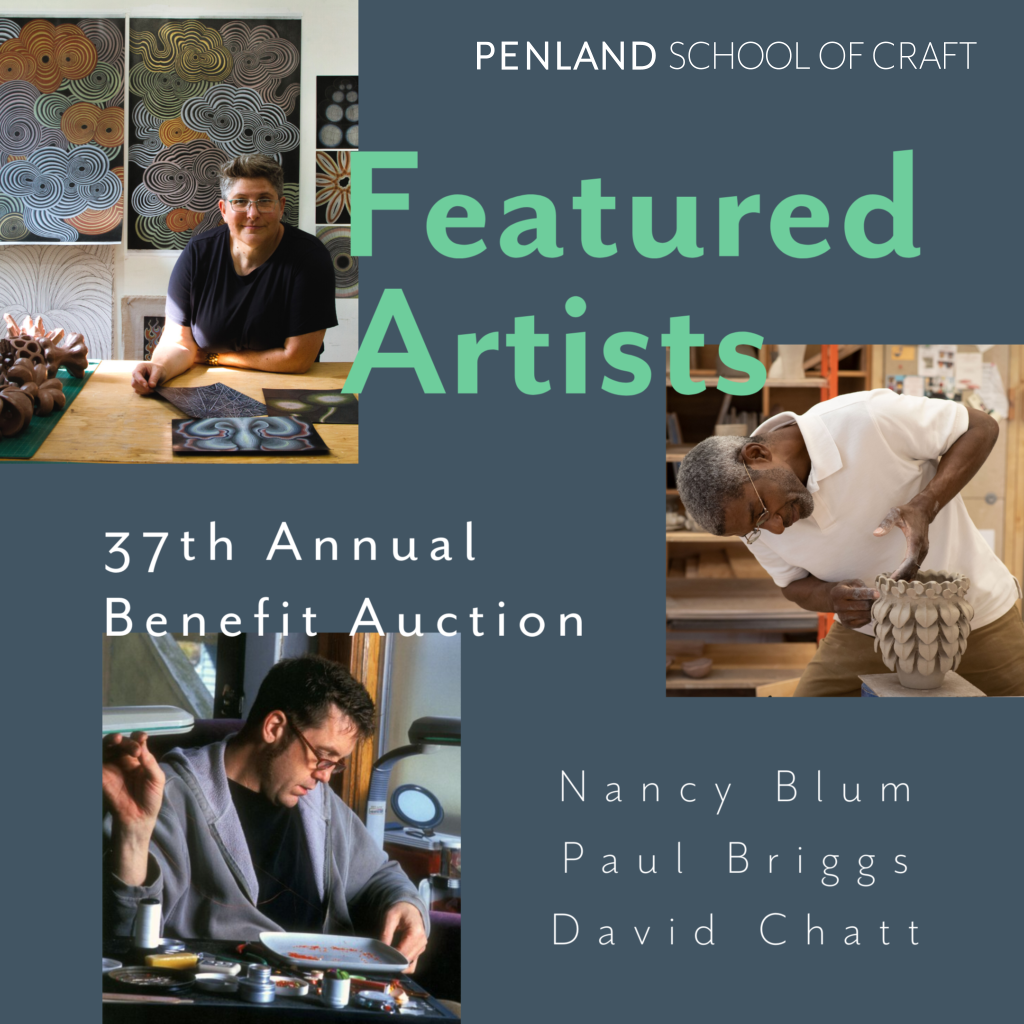 To choose only three artists to honor at the Penland Benefit Auction from hundreds of talented current and former guest instructors, resident artists, and core fellows is the hardest of tasks, taken on with great care.
To choose only three artists to honor at the Penland Benefit Auction from hundreds of talented current and former guest instructors, resident artists, and core fellows is the hardest of tasks, taken on with great care.
Our Featured Artists embody the spirit of Penland’s craft education programming. They represent a range of media and a balance of tradition and innovation, skill and imagination.
This year, we are very proud to honor Nancy Blum. Paul Briggs, and David Chatt. We look forward to celebrating these wonderful individuals and sharing more about their work with you!
The Benefit Auction is Penland School of Craft’s major annual fundraiser. A joyous and festive celebration of craft, community, and all things Penland, we will welcome collectors, curators, artists, and friends from far and wide.

Nancy Blum is known for her large-scale botanical drawings and public artworks. At Penland, she has empowered others to develop their own public art practices. Nancy’s ongoing “Black Drawings” series explores the interconnectivity of all living beings, playfully rendered depictions of scientific imaginings, abstractions of the natural world, and riffs on the brilliance found in pattern. She has created large-scale public art projects around the country, including a suite of botanically themed mosaics, located at the New York MTA’s historic 28th St. Station. Her drawings and sculptures have been represented in numerous exhibitions at galleries and other venues such as the Weatherspoon Art Museum at UNC Greensboro and the International Print Center and the Brooklyn Botanic Gardens, both in New York City. She has had recent solo exhibitions at Reynolds Gallery in Virginia and Ricco Maresca Gallery in New York City. Blum’s work is held by the World Ceramic Exposition Foundation in Icheon, South Korea, the Scottsdale Museum of Contemporary Art in Arizona, and the Boise Art Museum in Idaho, among many others. Her work can be found in New York City at McKenezie Fine Art and Ricco Maresca Gallery.
 Paul Briggs is known for his pinch-formed vessels and slab-built sculptural forms. His unique pinching process is neither additive nor subtractive but expansive, growing the form from one chunk of clay. Paul’s slab-built forms are generally more planned, measured, and intentional. Combining these two ways of working and thinking becomes a means of expressing ideas neither can accomplish on their own. Paul is an artist-teacher with training in ceramics, sculpture, and education. At Penland, he has shared his innovative techniques in the clay studio. His work has been featured in many exhibitions including Lucy Lacoste Gallery in Cambridge, Massachusetts, Friedman Benda Gallery in New York City, The Clay Studio in Philadelphia, the San Angelo Museum of Art in Texas, Design Miami, and Eutectic Gallery in Portland, Oregon. His work can be found in the collections of the Fuller Craft Museum in Massachusetts, the Columbus Museum of Art in Ohio, the San Angelo Museum of Art in Texas, the Alfred Ceramic Art Museum in New York.
Paul Briggs is known for his pinch-formed vessels and slab-built sculptural forms. His unique pinching process is neither additive nor subtractive but expansive, growing the form from one chunk of clay. Paul’s slab-built forms are generally more planned, measured, and intentional. Combining these two ways of working and thinking becomes a means of expressing ideas neither can accomplish on their own. Paul is an artist-teacher with training in ceramics, sculpture, and education. At Penland, he has shared his innovative techniques in the clay studio. His work has been featured in many exhibitions including Lucy Lacoste Gallery in Cambridge, Massachusetts, Friedman Benda Gallery in New York City, The Clay Studio in Philadelphia, the San Angelo Museum of Art in Texas, Design Miami, and Eutectic Gallery in Portland, Oregon. His work can be found in the collections of the Fuller Craft Museum in Massachusetts, the Columbus Museum of Art in Ohio, the San Angelo Museum of Art in Texas, the Alfred Ceramic Art Museum in New York.

David Chatt is a sculptural glass bead artist whose work has created space for beadwork in the world of contemporary craft. He creates vessels, objects, and sculptures by hand, sewing glass beads using a right angle weave stitch that he adapted. A Penland resident artist from 2008-2011, Chatt has been a Penland student and instructor many times over. His career has been chronicled in books and periodicals and was recognized by a retrospective at the Bellevue Arts Museum in Washington. In 2014, David received a North Carolina Arts Council Fellowship, and in 2019 his work received the Grand Prize at the Irish Glass Biennale. In 2021, “Love Dad,” a piece created while he was living in North Carolina, was purchased by the Smithsonian’s Renwick Gallery and is included in its current 50th anniversary show. His work can be found in the collection of the Bead Museum in Arizona, the Racine Art Museum in Wisconsin, the Museum of Arts and Design in New York City, and the Tacoma Art Museum in Washington.
Registration for the 37th Annual Penland Benefit Auction opens and invitations will be mailed in May. An illustrated online catalog will be available in July. LEARN MORE ABOUT THE PENLAND BENEFIT AUCTION.


